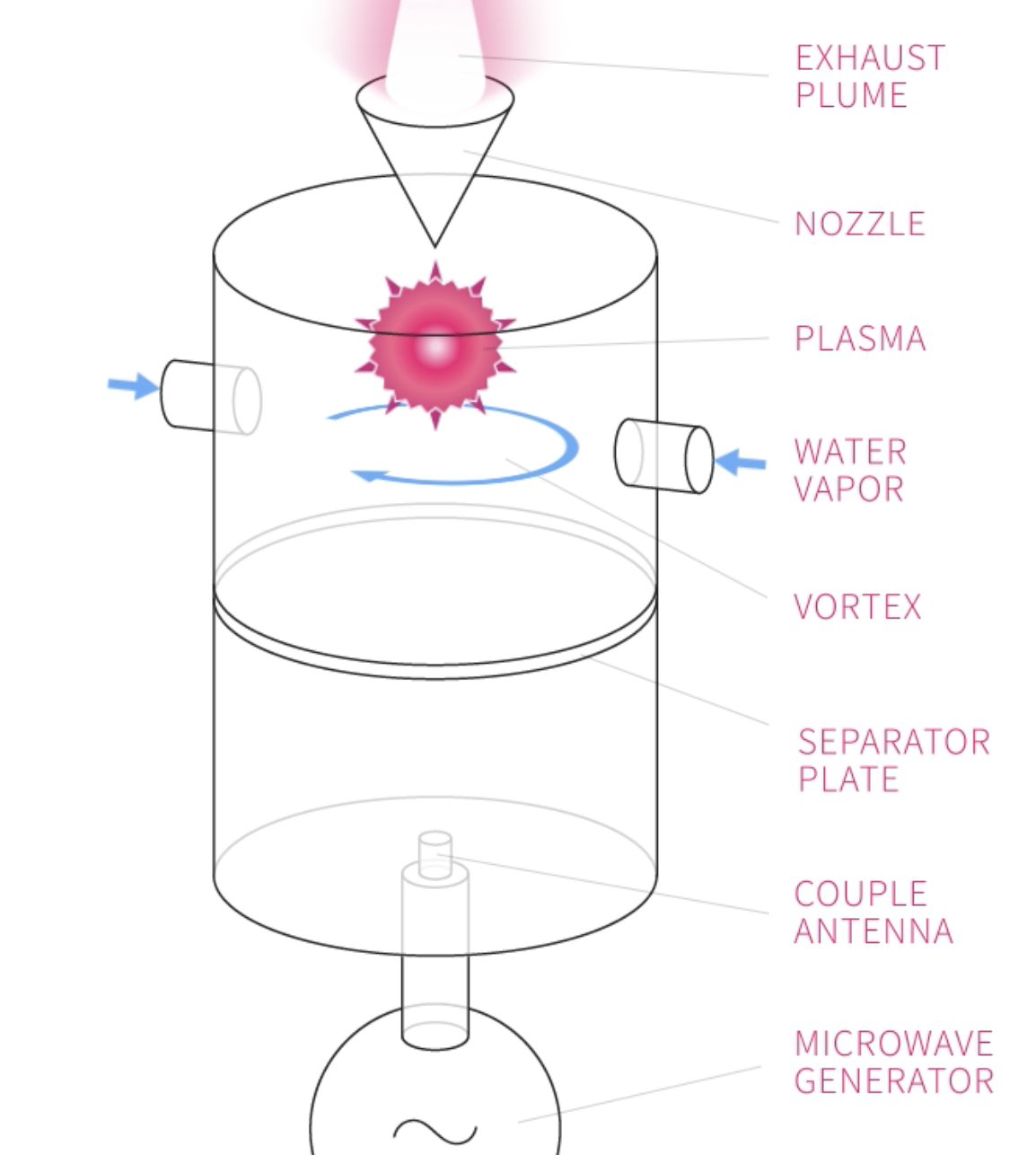December 12, 2002 by Ray Kurzweil
Original link: http://www.kurzweilai.net/the-intelligent-universe
Orginally published on Edge Nov. 7, 2002. Published on KurzweilAI.net on Dec. 12, 2002.
On July 21, 2002, Edge brought together leading thinkers to speak about their "universe." Other participants:
The Computational Universe by Seth Lloyd
The Emotion Universe by Marvin Minsky
The Inflationary Universe by Alan Harvey Guth
The Cyclic Universe by Paul Steinhardt
Within 25 years, we’ll reverse-engineer the brain and go on to develop superintelligence. Extrapolating the exponential growth of computational capacity (a factor of at least 1000 per decade), we’ll expand inward to the fine forces, such as strings and quarks, and outward. Assuming we could overcome the speed of light limitation, within 300 years we would saturate the whole universe with our intelligence.
Original link: http://www.kurzweilai.net/the-intelligent-universe
Orginally published on Edge Nov. 7, 2002. Published on KurzweilAI.net on Dec. 12, 2002.
On July 21, 2002, Edge brought together leading thinkers to speak about their "universe." Other participants:
The Computational Universe by Seth Lloyd
The Emotion Universe by Marvin Minsky
The Inflationary Universe by Alan Harvey Guth
The Cyclic Universe by Paul Steinhardt
Within 25 years, we’ll reverse-engineer the brain and go on to develop superintelligence. Extrapolating the exponential growth of computational capacity (a factor of at least 1000 per decade), we’ll expand inward to the fine forces, such as strings and quarks, and outward. Assuming we could overcome the speed of light limitation, within 300 years we would saturate the whole universe with our intelligence.
The universe has been set up in an exquisitely specific way so that evolution could produce the people that are sitting here today [at Edge's REBOOTING CIVILIZATION II meeting on July 21, 2002] and we could use our intelligence to talk about the universe. We see a formidable power in the ability to use our minds and the tools we’ve created to gather evidence, to use our inferential abilities to develop theories, to test the theories, and to understand the universe at increasingly precise levels. That’s one role of intelligence. The theories that we heard on cosmology look at the evidence that exists in the world today to make inferences about what existed in the past so that we can develop models of how we got here.
Then, of course, we can run those models and project what might happen in the future. Even if it’s a little more difficult to test the future theories, we can at least deduce, or induce, that certain phenomena that we see today are evidence of times past, such as radiation from billions of years ago. We can’t really test what will happen billions or trillions of years from now quite as directly, but this line of inquiry is legitimate, in terms of understanding the past and the derivation of the universe. As we heard today, the question of the origin of the universe is certainly not resolved. There are competing theories, and at several times we’ve had theories that have broken down, once we acquired more precise evidence.
At the same time, however, we don’t hear discussion about the role of intelligence in the future. According to common wisdom, intelligence is irrelevant to cosmological thinking. It is just a bit of froth dancing in and out of the crevices of the universe, and has no effect on our ultimate cosmological destiny. That’s not my view. The universe has been set up exquisitely enough to have intelligence. There are intelligent entities like ourselves that can contemplate the universe and develop models about it, which is interesting. Intelligence is, in fact, a powerful force and we can see that its power is going to grow not linearly but exponentially, and will ultimately be powerful enough to change the destiny of the universe.
I want to propose a case that intelligence—specifically human intelligence, but not necessarily biological human intelligence—will trump cosmology, or at least trump the dumb forces of cosmology. The forces that we heard discussed earlier don’t have the qualities that we posit in intelligent decision-making. In the grand celestial machinery, forces deplete themselves at a certain point and other forces take over. Essentially you have a universe that’s dominated by what I call dumb matter, because it’s controlled by fairly simple mechanical processes.
Human civilization possesses a different type of force with a certain scope and a certain power. It’s changing the shape and destiny of our planet. Consider, for example, asteroids and meteors. Small ones hit us on a fairly regular basis, but the big ones hit us every some tens of millions of years and have apparently had a big impact on the course of biological evolution. That’s not going to happen again. If it happened next year we’re not quite ready to deal with it, but it doesn’t look like it’s going to happen next year. When it does happen again our technology will be quite sufficient. We’ll see it coming, and we will deal with it. We’ll use our engineering to send up a probe and blast it out of the sky. You can score one for intelligence in terms of trumping the natural unintelligent forces of the universe.
Commanding our local area of the sky is, of course, very small on a cosmological scale, but intelligence can overrule these physical forces, not by literally repealing the natural laws, but by manipulating them in such a supremely sublime and subtle way that it effectively overrules these laws. This is particularly the case when you get machinery that can operate at nano and ultimately femto and pico scales. Whereas the laws of physics still apply, they’re being manipulated now to create any outcome the intelligence of this civilization decides on.
How intelligence developed
Let me back up and talk about how intelligence came about. Wolfram’s book has prompted a lot of talk recently on the computational substrate of the universe and on the universe as a computational entity. Earlier today, Seth Lloyd talked about the universe as a computer and its capacity for computation and memory. What Wolfram leaves out in talking about cellular automata is how you get intelligent entities. As you run these cellular automata, they create interesting pictures, but the interesting thing about cellular automata, which was shown long before Wolfram pointed it out, is that you can get apparently random behavior from deterministic processes.It’s more than apparent that you literally can’t predict an outcome unless you can simulate the process. If the process under consideration is the whole universe, then presumably you can’t simulate it unless you step outside the universe. But when Wolfram says that this explains the complexity we see in nature, it’s leaving out one important step. As you run the cellular automata, you don’t see the growth in complexity—at least, certainly he’s never run them long enough to see any growth in what I would call complexity. You need evolution.
Marvin talked about some of the early stages of evolution. It starts out very slow, but then something with some power to sustain itself and to overcome other forces is created and has the power to self-replicate and preserve that structure. Evolution works by indirection. It creates a capability and then uses that capability to create the next. It took billions of years until this chaotic swirl of mass and energy created the information-processing, structural backbone of DNA, and then used that DNA to create the next stage.
With DNA, evolution had an information-processing machine to record its experiments and conduct experiments in a more orderly way. So the next stage, such as the Cambrian explosion, went a lot faster, taking only a few tens of millions of years. The Cambrian explosion then established body plans that became a mature technology, meaning that we didn’t need to evolve body plans any more.
These designs worked well enough, so evolution could then concentrate on higher cortical function, establishing another level of mechanism in the organisms that could do information processing. At this point, animals developed brains and nervous systems that could process information, and then that evolved and continued to accelerate. Homo sapiens evolved in only hundreds of thousands of years, and then the cutting edge of evolution again worked by indirection to use this product of evolution, the first technology creating species to survive, to create the next stage: technology, a continuation of biological evolution by other means.
The Law of Accelerating Returns
The first stages of technologies, like stone tools, fire, and the wheel took tens of thousands of years, but then we had more powerful tools to create the next stage. A thousand years ago, a paradigm shift like the printing press took only a century or so to be adopted, and this evolution has accelerated ever since. Fifty years ago, the first computers were designed with pencil on paper, with screwdrivers and wire. Today we have computers to design computers. Computer designers will design some high-level parameters, and twelve levels of intermediate design are computed automatically. The process of designing a computer now goes much more quickly.Evolutionary processes accelerate, and the returns from an evolutionary process grow in power. I’ve called this theory "The Law of Accelerating Returns." The returns, including economic returns, accelerate. Stemming from my interest in being an inventor, I’ve been developing mathematical models of this because I quickly realized that an invention has to make sense when the technology is finished, not when it was started, since the world is generally a different place three or four years later.
One exponential pattern that people are familiar with is Moore’s Law, which is really just one specific paradigm of shrinking transistors on integrated circuits. It’s remarkable how long it’s lasted, but it wasn’t the first, but the fifth paradigm to provide exponential growth to computing. Earlier, we had electro-mechanical calculators, using relays and vacuum tubes. Engineers were shrinking the vacuum tubes, making them smaller and smaller, until finally that paradigm ran out of steam because they couldn’t keep the vacuum any more. Transistors were already in use in radios and other small, niche applications, but when the mainstream technology of computing finally ran out of steam, it switched to this other technology that was already waiting in the wings to provide ongoing exponential growth. It was a paradigm shift. Later, there was a shift to integrated circuits, and at some point, integrated circuits will run out of steam.
Ten or 15 years from now we’ll go to the third dimension. Of course, research on three-dimensional computing is well under way, because as the end of one paradigm becomes clear, this perception increases the pressure for the research to create the next. We’ve seen tremendous acceleration of molecular computing in the last several years.
When my book, The Age of Spiritual Machines, came out about four years ago, the idea that three-dimensional molecular computing could be feasible was quite controversial, and a lot of computer scientists didn’t believe it was. Today, there is a universal belief that it’s feasible, and that it will arrive in plenty of time before Moore’s Law runs out. We live in a three-dimensional world, so we might as well use the third dimension. That will be the sixth paradigm.
Moore’s Law is one paradigm among many that have provided exponential growth in computation, but computation is not the only technology that has grown exponentially. We see something similar in any technology, particularly in ones that have any relationship to information.
The genome project, for example, was not a mainstream project when it was announced. People thought it was ludicrous that you could scan the genome in 15 years, because at the rate at which you could scan it when the project began, it could take thousands of years. But the scanning has doubled in speed every year, and actually most of the work was done in the last year of the project.
Magnetic data storage is not covered under Moore’s Law, since it involves packing information on a magnetic substrate, which is a completely different set of applied physics, but magnetic data storage has very regularly doubled every year. In fact there’s a second level of acceleration. It took us three years to double the price-performance of computing at the beginning of the century, and two years in the middle of the century, but we’re now doubling it in less than one year.
This is another feedback loop that has to do with past technologies, because as we improve the price performance, we put more resources into that technology. If you plot computers, as I’ve done, on a logarithmic scale, where a straight line would mean exponential growth, you see another exponential. There’s actually a double rate of exponential growth.
Another very important phenomenon is the rate of paradigm shift. This is harder to measure, but even though people can argue about some of the details and assumptions in these charts you still get these same very powerful trends. The paradigm shift rate itself is accelerating, and roughly doubling every decade. When people claim that we won’t see a particular development for a hundred years, or that something is going to take centuries to do accomplish, they’re ignoring the inherent acceleration of technical progress.
Bill Joy and I were at Harvard some months ago and one Nobel Prize-winning biologist said that we won’t see self-replicating nanotechnology entities for a hundred years. That’s actually a good intuition, because that’s my estimation—at today’s rate of progress—of how long it will take to achieve that technical milestone. However, since we’re doubling the rate of progress every decade, it’ll only take 25 calendar years to get there—this, by the way, is a mainstream opinion in the nanotechnology field.
The last century is not a good guide to the next, in the sense that it made only about 20 years of progress at today’s rate of progress, because we were speeding up to this point. At today’s rate of progress, we’ll make the same amount of progress as what occurred in the 20th century in 14 years, and then again in 7 years. The 21st century will see, because of the explosive power of exponential growth, something like 20,000 years of progress at today’s rate of progress—a thousand times greater than the 20th century, which was no slouch for radical change.
I’ve been developing these models for a few decades, and made a lot of predictions about intelligent machines in the 1980s that people can check out. They weren’t perfect, but were a pretty good road map. I’ve been refining these models. I don’t pretend that anybody can see the future perfectly, but the power of the exponential aspect of the evolution of these technologies, or of evolution itself, is undeniable. And that creates a very different perspective about the future.
Let’s take computation. Communication is important and shrinkage is important. Right now, we’re shrinking technology, apparently both mechanical and electronic, at a rate of 5.6 per linear dimension per decade. That number is also moving slowly, in a double exponential sense, but we’ll get to nanotechnology at that rate in the 2020s. There are some early-adopter examples of nanotechnology today, but the real mainstream, where the cutting edge of the operating principles are in the multi-nanometer range, will be in the 2020s. If you put these together you get some interesting observations.
Right now we have 1026 calculations per second in human civilization in our biological brains. We could argue about this figure, but it’s basically, for all practical purposes, fixed. I don’t know how much intelligence it adds if you include animals, but maybe you then get a little bit higher than 1026. Non-biological computation is growing at a double exponential rate, and right now is millions of times less than the biological computation in human beings. Biological intelligence is fixed, because it’s an old, mature paradigm, but the new paradigm of non-biological computation and intelligence is growing exponentially. The crossover will be in the 2020s and after that, at least from a hardware perspective, non-biological computation will dominate at least quantitatively.
This brings up the question of software. Lots of people say that even though things are growing exponentially in terms of hardware, we’ve made no progress in software. But we are making progress in software, even if the doubling factor is much slower.
Reverse-engineering the brain
The real scenario that I want to address is the reverse-engineering of the human brain. Our knowledge of the human brain and the tools we have to observe and understand it are themselves growing exponentially. Brain scanning and mathematical models of neurons and neural structures are growing exponentially, and there’s very interesting work going on.There is Lloyd Watts, for example, who with his colleagues has collected models of specific types of neurons and wiring information about how the internal connections are wired in different regions of the brain. He has put together a detailed model of about 15 regions that deal with auditory processing, and has applied psychoacoustic tests of the model, comparing it to human auditory perception.
The model is at least reasonably accurate, and this technology is now being used as a front end for speech recognition software. Still, we’re at the very early stages of understanding the human cognitive system. It’s comparable to the genome project in its early stages in that we also knew very little about the genome in its early stages. We now have most of the data, but we still don’t have the reverse engineering to understand how it works.
It would be a mistake to say that the brain only has a few simple ideas and that once we can understand them we can build a very simple machine. But although there is a lot of complexity to the brain, it’s also not vast complexity. It is described by a genome that doesn’t have that much information in it. There are about 800 million bytes in the uncompressed genome. We need to consider redundancies in the DNA, as some sequences are repeated hundreds of thousands of times. By applying routine data compression, you can compress this information at a ratio of about 30 to 1, giving you about 23 million bytes—which is smaller than Microsoft Word—to describe the initial conditions of the brain.
But the brain has a lot more information than that. You can argue about the exact number, but I come up with thousands of trillions of bytes of information to characterize what’s in a brain, which is millions of times greater than what is in the genome. How can that be?
Marvin talked about how the methods from computer science are important for understanding how the brain works. We know from computer science that we can very easily create programs of considerable complexity from a small starting condition. You can, with a very small program, create a genetic algorithm that simulates some simple evolutionary process and create something of far greater complexity than itself. You can use a random function within the program, which ultimately creates not just randomness, but is creating some meaningful information after the initial random conditions are evolved using a self organizing method, resulting in information that’s far greater than the initial conditions.
That is in large measure how the genome creates the brain. We know that it specifies certain constraints for how a particular region is wired, but within those constraints and methods, there’s a great deal of stochastic or random wiring, followed by some kind of process whereby the brain learns and self-organizes to make sense of its environment. At this point, what began as random becomes meaningful, and the program has multiplied the size of its information.
The point of all of this is that, since it’s a level of complexity we can manage, we will be able to reverse-engineer the human brain. We’ve shown that we can model neurons, clusters of neurons, and even whole brain regions. We are well down that path. It’s rather conservative to say that within 25 years we’ll have all of the necessary scanning information and neuron models and will be able to put together a model of the principles of operation of how the human brain works. Then, of course, we’ll have an entity that has some human like qualities. We’ll have to educate and train it, but of course we can speed up that process, since we’ll have access to everything that’s out in the Web, which will contain all accessible human knowledge.
One of the nice things about computer technology is that once you master a process it can operate much faster. So we will learn the secrets of human intelligence, partly from reverse-engineering of the human brain. This will be one source of knowledge for creating the software of intelligence.
We can then combine some advantages of human intelligence with advantages that we see clearly in non-biological intelligence. We spent years training our speech recognition system, which gives us a combination of rules. It mixes expert-system approaches with some self-organizing techniques like neural nets, Markov models and other self-organizing algorithms. We automate the training process by recording thousands of hours of speech and annotating it, and it automatically readjusts all its Markov-model levels and other parameters when it makes mistakes. Finally, after years of this process, it does a pretty good job of recognizing speech. Now, if you want your computer to do the same thing, you don’t have to go through those years of training like we do with every child, you can actually load the evolved pattern of this one research computer, which is called loading the software.
Machines can share their knowledge. Machines can do things quickly. Machines have a type of memory that’s more accurate than our frail human memories. Nobody at this table can remember billions of things perfectly accurately and look them up quickly. The combination of the software of biological human intelligence with the benefits of non-biological intelligence will be very formidable. Ultimately, this growing non-biological intelligence will have the benefits of human levels of intelligence in terms of its software and our exponentially growing knowledge base.
Superintelligence saturates the universe
In the future, maybe only one part of intelligence in a trillion will be biological, but it will be infused with human levels of intelligence, which will be able to amplify itself because of the powers of non-biological intelligence to share its knowledge. How does it grow? Does it grow in or does it grow out? Growing in means using finer and finer granularities of matter and energy to do computation, while growing out means using more of the stuff in the universe.Presently, we see some of both. We see mostly the "in," since Moore’s Law inherently means that we’re shrinking the size of transistors and integrated circuits, making them finer and finer. To some extent we’re also expanding out in that even though the chips are more and more powerful, we make more chips every year, and deploy more economic and material resources towards this non biological intelligence.
Ultimately, we’ll get to nanotechnology-based computation, which is at the molecular level, infused with the software of human intelligence and the expanding knowledge base of human civilization. It’ll continue to expand both inwards and outwards. It goes in waves as the expansion inwards reaches certain points of resistance. The paradigm shifts will be pretty smooth as we go from the second to the third dimension via molecular computing. At that point it’ll be feasible to take the next step into femto engineering—on the scale of trillionths of a meter—and pico engineering—on the scale of thousands of trillionths of a meter—going into the finer structures of matter and manipulating some of the really fine forces, such as strings and quarks.
That’s going to be a barrier, however, so the ongoing expansion of our intelligence is going to be propelled outward. Nonetheless, it will go both in and out. Ultimately, if you do the math, we will completely saturate our corner of the universe, the earth and solar system, sometime in the 22nd century. We’ll then want ever-greater horizons, as is the nature of intelligence and evolution, and will then expand to the rest of the universe.
How quickly will it expand? One premise is that it will expand at the speed of light, because that’s the fastest speed at which information can travel. There are also tantalizing experiments on quantum disentanglement that show some effect at rates faster than the speed of light, even much faster, perhaps theoretically instantaneously. Interestingly enough, though, this is not the transmission of information, but the transmission of profound quantum randomness, which doesn’t accomplish our purpose of communicating intelligence. You need to transmit information, not randomness. So far nobody has actually shown true transmission of information at faster than the speed of light, at least not in a way that has convinced mainstream scientific opinion.
If, in fact, that is a fundamental barrier, and if things that are far away really are far away, which is to say there are no shortcuts through wormholes through the universe, then the spread of our intelligence will be slow, governed by the speed of light. This process will be initiated within 200 years. If you do the math, we will be at near saturation of the available matter and energy in and around our solar system, based on current understandings of the limitations of computation, within that time period.
However, it’s my conjecture that by going through these other dimensions that Alan and Paul talked about, there may be shortcuts. It may be very hard to do, but we’re talking about supremely intelligent technologies and beings. If there are ways to get to parts of the universe through shortcuts such as wormholes, they’ll find, deploy, and master them, and get to other parts of the universe faster. Then perhaps we can reach the whole universe, say 1080 protons, photons, and other particles that Seth Lloyd estimates represents on the order of 1090 bits, without being limited by the apparent speed of light.
If the speed of light is not a limit, and I do have to emphasize that this particular point is a conjecture at this time, then within 300 years, we would saturate the whole universe with our intelligence, and the whole universe would become supremely intelligent and be able to manipulate everything according to its will. We’re currently multiplying computational capacity by a factor of at least 103 every decade. This is conservative, as this rate of exponential growth is itself growing exponentially. Thus it is conservative to project that within 30 decades (300 years), we would multiply current computational capacities by a factor of 1090, and thus exceed Seth Lloyd’s estimate of 1090 bits in the Universe.
We can speculate about identity—will this be multiple people or beings, or one being, or will we all be merged?—but nonetheless, we’ll be very intelligent and we’ll be able to decide whether we want to continue expanding. Information is very sacred, which is why death is a tragedy. Whenever a person dies, you lose all that information in a person. The tragedy of losing historical artifacts is that we’re losing information. We could realize that losing information is bad, and decide not to do that any more. Intelligence will have a profound effect on the cosmological destiny of the universe at that point.
Why SETI will fail
I’ll end with a comment about the SETI project. Regardless of this ultimate resolution of this issue of the speed of light—and it is my speculation (and that of others as well) that there are ways to circumvent it—if there are ways, they’ll be found, because intelligence is intelligent enough to master any mechanism that is discovered. Regardless of that, I think the SETI project will fail—it’s actually a very important failure, because sometimes a negative finding is just as profound as a positive finding—for the following reason: we’ve looked at a lot of the sky with at least some level of power, and we don’t see anybody out there.The SETI assumption is that even though it’s very unlikely that there is another intelligent civilization like we have here on Earth, there are billions of trillions of planets. So even if the probability is one in a million, or one in a billion, there are still going to be millions, or billions, of life-bearing and ultimately intelligence-bearing planets out there.
If that’s true, they’re going to be distributed fairly evenly across cosmological time, so some will be ahead of us, and some will be behind us. Those that are ahead of us are not going to be ahead of us by only a few years. They’re going to be ahead of us by billions of years. But because of the exponential nature of evolution, once we get a civilization that gets to our point, or even to the point of Babbage, who was messing around with mechanical linkages in a crude 19th century technology, it’s only a matter of a few centuries before they get to a full realization of nanotechnology, if not femto and pico-engineering, and totally infuse their area of the cosmos with their intelligence. It only takes a few hundred years!
So if there are millions of civilizations that are millions or billions of years ahead of us, there would have to be millions that have passed this threshold and are doing what I’ve just said, and have really infused their area of the cosmos. Yet we don’t see them, nor do we have the slightest indication of their existence, a challenge known as the Fermi paradox. Someone could say that this "silence of the cosmos" is because the speed of light is a limit, therefore we don’t see them, because even though they’re fantastically intelligent, they’re outside of our light sphere. Of course, if that’s true, SETI won’t find them, because they’re outside of our light sphere.
But let’s say they’re inside our light sphere, or that light isn’t a limitation, for the reasons I’ve mentioned. Then perhaps they decided, in their great wisdom, to remain invisible to us. You can imagine that there’s one civilization out there that made that decision, but are we to believe that this is the case for every one of the millions, or billions, of civilizations that SETI says should be out there?
That’s unlikely, but even if it’s true, SETI still won’t find them, because if a civilization like that has made that decision, it is so intelligent they’ll be able to carry that out, and remain hidden from us. Maybe they’re waiting for us to evolve to that point and then they’ll reveal themselves to us. Still, if you analyze this more carefully, it’s very unlikely in fact that they’re out there.
You might ask, isn’t it incredibly unlikely that this planet, which is in a very random place in the universe and one of trillions of planets and solar systems, is ahead of the rest of the universe in the evolution of intelligence? Of course the whole existence of our universe, with the laws of physics so sublimely precise to allow this type of evolution to occur is also very unlikely, but by the anthropic principle, we’re here, and by an analogous anthropic principle we are here in the lead. After all, if this were not the case, we wouldn’t be having this conversation. So by a similar anthropic principle we’re able to appreciate this argument.
I’ll end on that note.
Copyright © 2002 by Edge Foundation, Inc. Published on KurzweilAI.net with permission.













